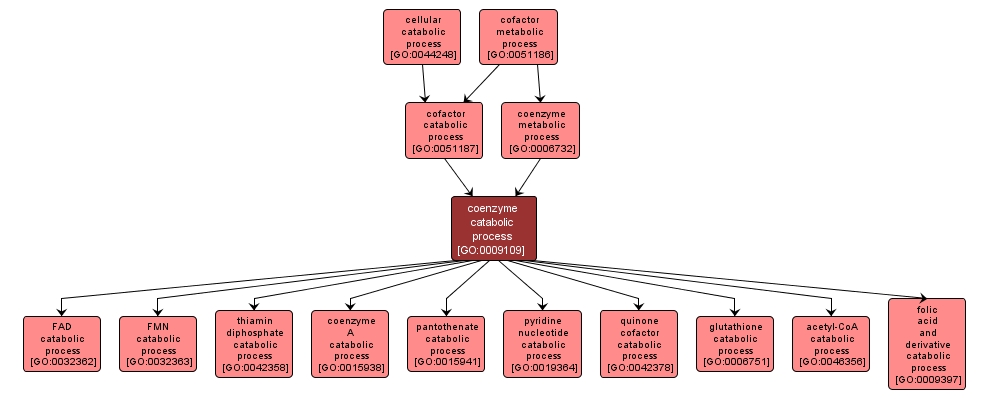GO TERM SUMMARY
|
| Name: |
coenzyme catabolic process |
| Acc: |
GO:0009109 |
| Aspect: |
Biological Process |
| Desc: |
The chemical reactions and pathways resulting in the breakdown of coenzymes, any of various nonprotein organic cofactors that are required, in addition to an enzyme and a substrate, for an enzymatic reaction to proceed. |
Synonyms:
- coenzyme and prosthetic group catabolic process
- coenzyme breakdown
- coenzyme catabolism
- coenzyme and prosthetic group catabolism
- coenzyme degradation
|
|

|
INTERACTIVE GO GRAPH
|














